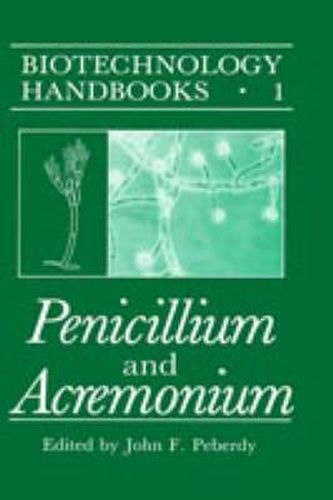Readings Newsletter
Become a Readings Member to make your shopping experience even easier.
Sign in or sign up for free!
You’re not far away from qualifying for FREE standard shipping within Australia
You’ve qualified for FREE standard shipping within Australia
The cart is loading…






This title is printed to order. This book may have been self-published. If so, we cannot guarantee the quality of the content. In the main most books will have gone through the editing process however some may not. We therefore suggest that you be aware of this before ordering this book. If in doubt check either the author or publisher’s details as we are unable to accept any returns unless they are faulty. Please contact us if you have any questions.
Biotechnology is a word that was originally coined to describe the new processes which could be derived from our ability to manipulate, in vitro, the genetic material common to all organisms. I t has now become a generic term encompassing all applications of living systems, including the more traditional fermentation and agricultural industries. Recombinant DNA technology has opened up new opportunities for the exploitation of microorganisms and animal and plant cells as producers or modifiers of chemical and biological products. This series of handbooks deals exclusively with microorganisms which are at the forefront of the new technologies and brings together in each of its volumes the background information necessary to appreciate the historical development of the organisms making up a particular genus, the degree to which molecular biology has opened up new opportunities, and the place they occupy in today’s biotechnology industry. Our aim was to make this primarily a practical approach, with emphasis on methodology, combining for the first time information which has largely been spread across a wide literature base or only touched upon briefly in review articles. Each handbook should provide the reader with a source text, from which the importance of the genus to his or her work can be identified, and a practical guide to the handling and exploitation of the organisms included.
$9.00 standard shipping within Australia
FREE standard shipping within Australia for orders over $100.00
Express & International shipping calculated at checkout
This title is printed to order. This book may have been self-published. If so, we cannot guarantee the quality of the content. In the main most books will have gone through the editing process however some may not. We therefore suggest that you be aware of this before ordering this book. If in doubt check either the author or publisher’s details as we are unable to accept any returns unless they are faulty. Please contact us if you have any questions.
Biotechnology is a word that was originally coined to describe the new processes which could be derived from our ability to manipulate, in vitro, the genetic material common to all organisms. I t has now become a generic term encompassing all applications of living systems, including the more traditional fermentation and agricultural industries. Recombinant DNA technology has opened up new opportunities for the exploitation of microorganisms and animal and plant cells as producers or modifiers of chemical and biological products. This series of handbooks deals exclusively with microorganisms which are at the forefront of the new technologies and brings together in each of its volumes the background information necessary to appreciate the historical development of the organisms making up a particular genus, the degree to which molecular biology has opened up new opportunities, and the place they occupy in today’s biotechnology industry. Our aim was to make this primarily a practical approach, with emphasis on methodology, combining for the first time information which has largely been spread across a wide literature base or only touched upon briefly in review articles. Each handbook should provide the reader with a source text, from which the importance of the genus to his or her work can be identified, and a practical guide to the handling and exploitation of the organisms included.